
We have all been in a situation where a sudden emergency or last minute arrangement has made us wonder if it possible to only bake something partially and resume baking later. Baking -- for many -- is a cherished activity that brings the warmth and magic of the kitchen to life, but it is also one of the most time-consuming ways to prepare food. While partially baking -- or parbaking -- is a well-established culinary technique, some basic food science understanding is needed to effectively use it.
The Science of Baking
When a food product is baked, four reactions happen simultaneously. First, in yeast-leavened baked goods, the warming dough coaxes the yeast to speed up, quickly rising the bread. In chemically-leavened baked goods, the heat triggers the baking soda, causing the product to rise and spread. The fat in the product melts, releasing any trapped water. The water in the baking good turns into steam, continuing the product’s rise. The steam kills the yeast or deactivates the baking soda, because there is no more liquid water to activate it.
Why Partially Baking Is a Bad Idea
At this point, the structure of the baked good is not set. Should the product be removed from the heat at this point, the baked good will collapse -- and without live yeast or trapped water in the product -- it cannot be re-inflated with additional baking. The key to removing baked goods from the oven without being fully baked is to wait until the baked good’s structure is set, but before browning has set in -- approximately 80 percent of the baking time for the product. As most baked goods, such as brownies, bars and cakes, have short baking times, it is impractical to go through the steps of parbaking with them.
Partially Baking Bread
Many supermarkets, quick-service restaurants and a particular national doughnut chain do use parbaking for its breads and occasionally doughnuts when it is cost-prohibitive to train bakers or when there is a concern that quality cannot be maintained from site to site. Parbaked breads are considered unnatural, as an atypical quantity of yeast is needed to create a loaf of comparable size to a naturally-baked loaf, and additional chemicals and preservatives are needed to delay stalling and to maintain sterility. If a home baker is to parbake breads or rolls, the product must be baked to structural stability, quickly cooled to prevent carryover baking and then quickly frozen because the product would not have enough time to completely dry out internally and could quickly collect airborne mold. However, if one wished to pursue parbaking bread, recipes are available. Most freezer-section “ready-to-bake” breads and rolls are parbaked.
Partially Baking Piecrusts
While parbaking is generally considered undesirable for most types of baked goods, it is actually considered good baking when it comes to piecrusts. Baking a piecrust filled with pie weights or beans before filling the pie sets the crust, preventing the crust from becoming soggy with a wet filling or sagging while baking. The pre-baking of the crust -- referred to as “blind baking” by pie makers -- also promotes browning in the final product and encourages a flaky texture.
Related Articles
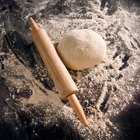
How to Preserve Dough That Has Risen

Does Yeast Cause Holes in Bread?
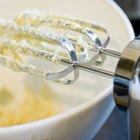
Does Baking Soda Affect the Height of a ...

Baking Vs. Roasting in Convection Ovens

Can You Substitute Yogurt for ...
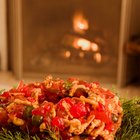
What Prevents Mold in Fruit Cakes?

Does Baking Dough Kill Bacteria?

What Are the Causes of Pie & Pastry ...

Can I Substitute Bleached for ...
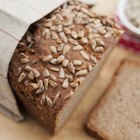
Russian Rye Bread vs. Pumpernickel

Is Revere Ware Aluminum?

What Causes Bubbles on Top of Cakes ...

How to Quickly Defrost Phyllo

Does Seven-Minute Frosting Need to Be ...
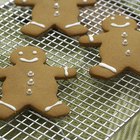
What Is a Baking Wire Rack?

What Happens if the Yeast Dies Before ...

Main Ingredients of English Muffins

How Long Can a Bagel With Cream Cheese ...
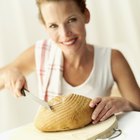
How to Bake Bread in a Dutch Oven
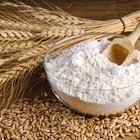
Differences Between Bleached Flour & ...
References
Writer Bio
Frederick Reese is an author and political journalist who has covered current affairs, culture and society for various print and online publications. Reese holds a B.A. in art and art history from Colgate University.
Photo Credits
Thinkstock Images/Stockbyte/Getty Images